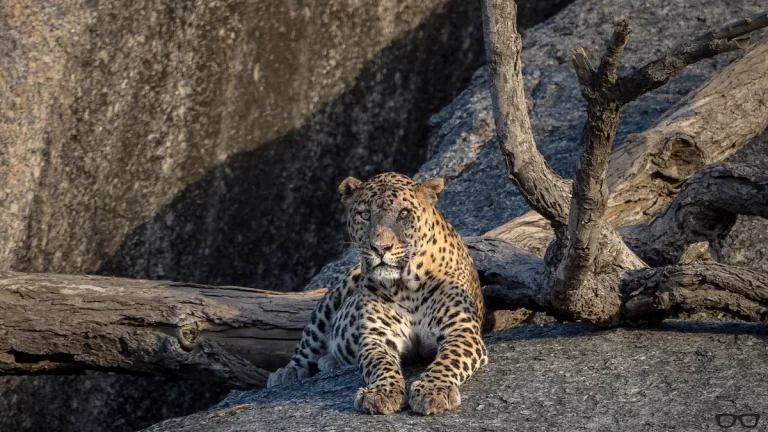
In Rajasthan, Raj discovers a Bishnoi ethos that informs a spiritual tree-hugging practice which pre-dates the modern climate change movement.
By Rajesh C. Oza
A post-covid trip to Rajasthan
Thomas Hardy’s Far from the Madding Crowd inspired my wife (Mangla) and my first trip back to India since Covid shut down the world. We wanted to be in quieter parts of India rather than in the middle of the Information Technology crowd that celebrates even minor software releases with a tamasha that rivals wedding bands and Diwali fireworks.
We have been returning to India for decades to visit family and colleagues who live and work in cities; time in our familial Rajasthani villages has been less frequent. But regardless of whether we visited urban or rural spaces, we stayed primarily at the apex of India’s twin hierarchies: the caste system (Brahmins) and the knowledge worker system (IT professionals).
On this trip, we landed in Hyderabad, or rather Cyberabad as some have tagged it. After a quick day trip to Kolkata to honor a lost uncle, we flew into Udaipur’s quietly efficient airport on November 22, the same day that Prime Minister Modi was visiting in advance of upcoming elections that his BJP party won handily.
Udaipur
The airport was secure, but it didn’t feel like a fortress. The trees were green, in this city of many lakes. The palace hotels were full, but not because of the PM’s visit; this is the time of year to visit Rajasthan: the monsoon is over, and the temperature hovers between 60 degrees Fahrenheit at night when a fan and a blanket make for good company and 80 degrees Fahrenheit during warm days when you can lower a car window and breathe air that is much cleaner than most of India’s cities.
Also read: Dead Leopard Produced in the Court
We visited with an aunty who had tragically lost her son last year, leaving behind his bereaved mother, brother, wife, and two teenage children (a daughter, Kanishka, who goes by Kenny, and a son, Daksh, who goes by Roger). Yes, their nicknames are derived from the country-western legend Kenny Rogers, who famously sang “The Gambler.”
Life is a gamble everywhere, but it can feel particularly precarious in India where sometimes I feel that I’m rolling the dice when I cross a car-filled street. The odds are that one will make it to the other side, but still, I rely on a pedestrian’s jitterbug dance to avoid cars that believe the road is their privilege.
The Bishnoi Tribe
Fortunately for us, Nitin Trivedi gently drove us around this modestly busy city. Besides being one of Udaipur’s most trusted Hindi-, Marwari-, English-, and French-speaking tour guides, Nitin is family. His wife’s father and my wife’s father were brothers. When I asked Nitin about his more prominent clients, he mentioned that he had partnered as a translator with Paris-based Irene Frain on La Forêt des 29, an ethnography of Rajasthan’s Bishnoi tribe.
The Bishnoi identify themselves as caste-neutral, thus in some ways outside Hindu hierarchy; but they are very much inside Rajasthan’s tourism ecosystem. Nitin suggested that on our travel north to visit family in our villages and then in Jodhpur, we see a Bishnoi village near Jodhpur. This village functions in a tripartite manner reminiscent of the Indian tricolor: (1) at the green base is agriculture that provides daily sustenance for most of the villagers; (2) in the white middle with its blue charka is tourism which brings a cyclical influx of cash that was halted during the pandemic; and (3) at the saffron top is the Bishnoi ethos that informs a spiritual tree-hugging that long pre-dates the modern climate change movement.
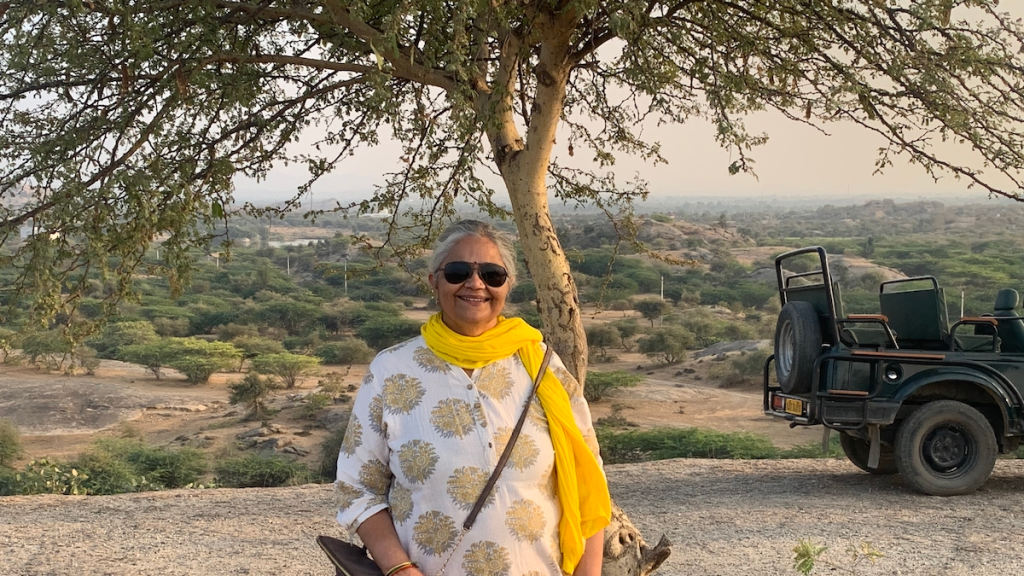 God lives in the trees
God lives in the trees
The Bishnoi believe God lives in the trees. In 1730, the Maharaja of Jodhpur, Abhay Singh, needed wood to build his new palace, so his soldiers began cutting down trees in Khejarli village. One brave Bishnoi villager, Amrita Devi, hugged a tree to protect it from the soldiers’ axes. Hundreds of other villagers adopted this pre-Gandhian form of nonviolent civil disobedience. Along with Amrita Devi, some 361 Bishnoi died protecting the trees and staying true to one of their 29 Principles. Abhay Singh was so moved by the Bishnoi’s love of the trees that he immediately ended the massacre, and a legend was born.
Also read: Have the Lions and Leopards become extinct in Sindh?
Before driving onward to Jodhpur, Mangla and I visited my father’s ancestral village, some three hours north of Udaipur. Bisalpur is home to an eye hospital that restores sight to thousands; it is also adjacent to the Jawai Bandh dam that brings water to millions. Minutes away from Bisalpur are a host of leopard camps. People from across India and the world come for either a day-long safari or stay overnight in palatial lodges or “glamping” tents near my little village to see untamed leopards in their natural habitat; these Aravalli hills are part of what is arguably the world’s oldest mountain range, home to countless generations of mother leopards and their cubs.
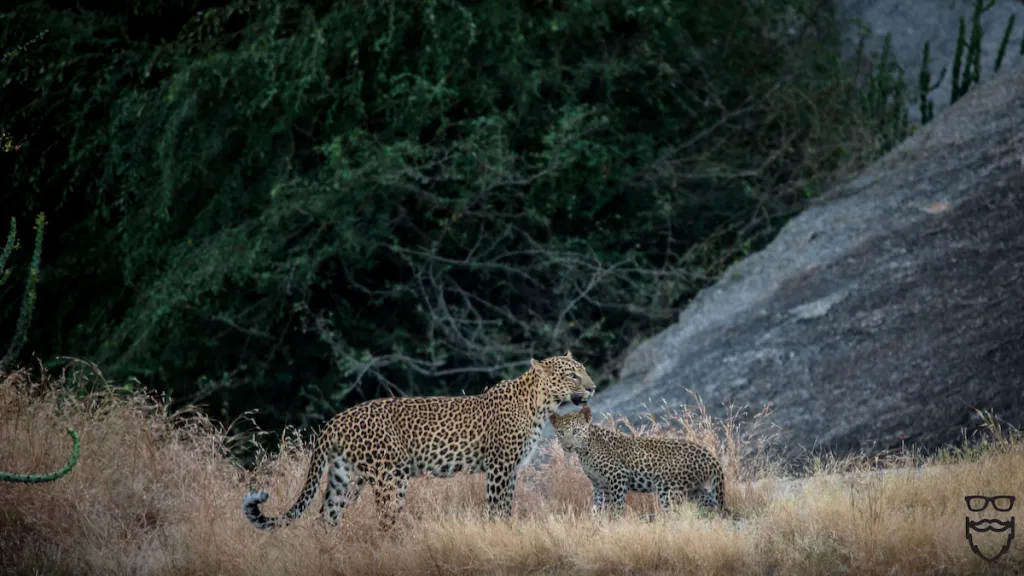
Spot a Leopard
Seeing a mother leopard and her three cubs was an experience that breached the boundary between tradition and modernity, village and city, past and present. After a seamless online interaction, Mangla spoke with Bhanu Pratap Singh, a Thakur of royal lineage, a former IT professional, and the founder of Jawai Safari. An impeccable gentleman, he helped Mangla book our safari tickets. Meeting Bhanu Pratap Singh in person was like what I imagine people who meet Prince William experience: while not the same as meeting the Queen or King, it is a brush with the aristocracy. After a brief interview with this “Prince of Leopards,” my family and I were on our way in a Gypsy jeep that bounced over hilly slabs of granite.
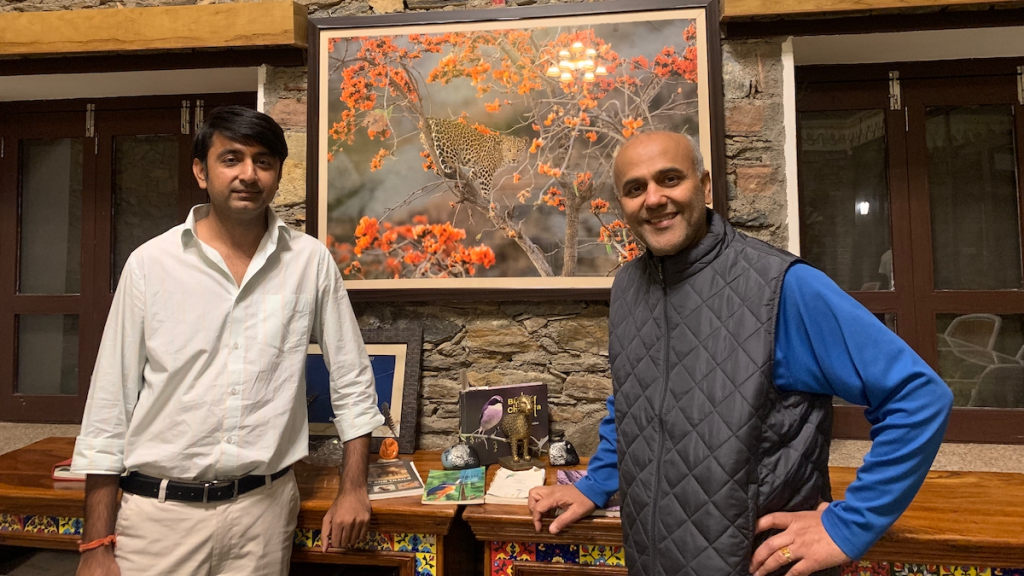
First, we went to the top of the Jawai Bandh dam and spotted two crocodiles sunning by the sweet water’s edge. Then the Gypsy raced through brush where we were a stone’s throw away from a dignified Little Egret. I asked our driver and guide, Mukesh, about the difference between egrets, herons, and cranes (egrets are a type of heron, and cranes are an altogether different kind of bird); he shrugged his shoulders and then reliably spotted a bounding nilgai, Asia’s largest antelope. Mukesh also encouraged hours-long patience as we scanned through his binoculars for a glimpse of the famed leopards.
Just as the sun was setting, and some in our Gypsy were giving up hope of spotting the feline aristocrats, we saw the mother and her cubs slipping in and out of hillside caves. Like royalty the world over, they seemed unaware of ordinary creatures desiring an audience with them.
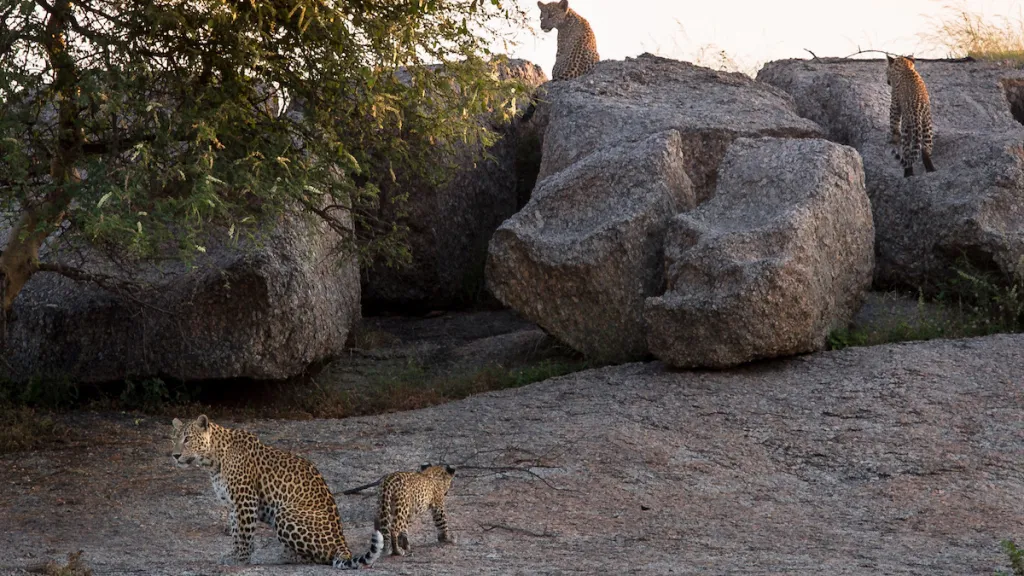
A Rajasthani village morning
My father, who is 96 years old and lives atop a hill with my mother in Northern California, has long regaled his children, grandchildren, and great-grandchildren with stories about his childhood in Bisalpur. He grew up there when these spotted cats’ ancestors would stroll down from the hills and coexist with villagers. Perhaps the Rabari goatherds would sadly hang their heads or angrily pound their dust-covered red turbans when a bleating kid was carried away. But legend has it that the leopards have never harmed a single human in Bisalpur. My village forebears have long reciprocated with a live-and-let-live philosophy.
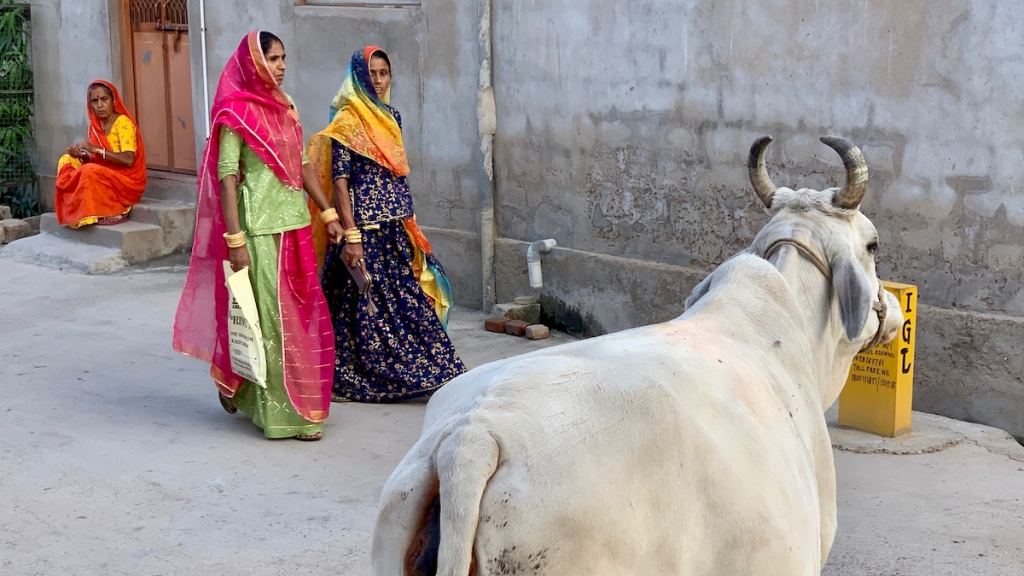
The leopard’s spots, which are actually rosettes, are a lovely metaphor for this mutualism. These rosettes, like the villages clustered around the leopard safaris, are irregularly shaped and grouped like petals of a rose. For leopards, this pattern serves as camouflage, simulating whispers of shadowy grass as the sun settles over hills of granite and highways of concrete. I pray that the traditions of Rajasthan survive. May the villagers—thriving on the benefits of modernizing tourism—forever whisper secrets to each other in Marwari and hug the ancient ways.
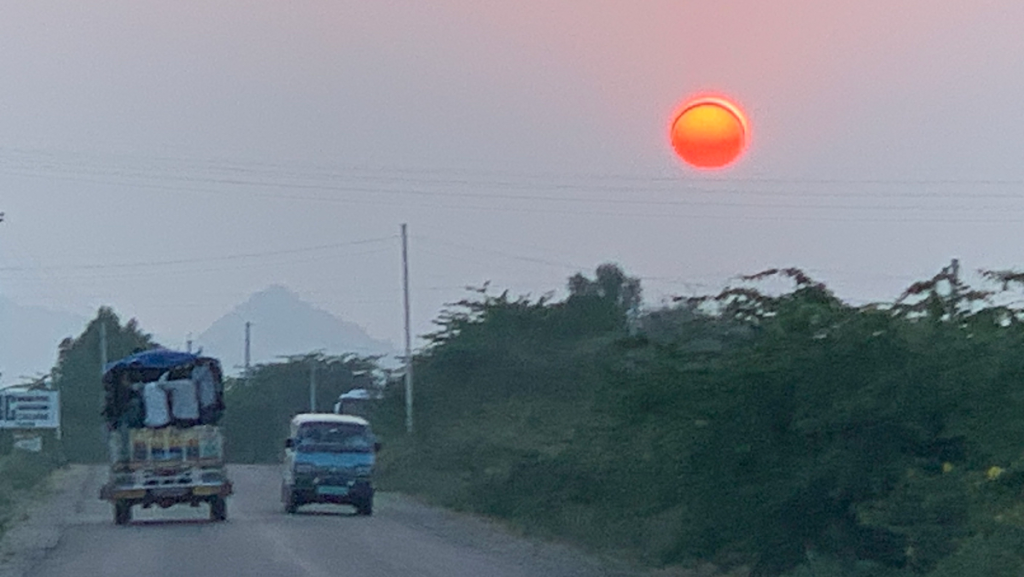
___________________